to the Chapters: 1 2 3
chapter 1
Sources:
Witnesses:
Isaac Balkar, Jerusalem
Ephraim Cohen — questionnaire of the Central Council of Lithuanian Jews in Italy.
Books:
The Popular Massacres of Lithuania, Part II. Vilnius, 1973.
Lithuanian Jewry, Volume III: Part A - Personalities. Part B - Places. Tel Aviv: Association of Former Lithuanians in Israel, established by Abraham Dov Abrams and Former Lithuanians in Philadelphia and Israel, 1967. p.362.
Lithuanian Jewry, Volume IV: The Holocaust 1941-1945. Tel Aviv: Association of Former Lithuanians in Israel, 1984. p. 363.
The German forces captured Seduva on 25 June 1941. The Lithuanian activists headed by the teacher Gorionos had already begun to terrorize the Jews, even before the entry of the Germans. By the beginning of July they had forcibly expelled the Jews from their homes, maltreated them, moved their possessions that were needed in the ghetto, transported the Jews to the village of Pakuteniai, 5 km beyond Seduva, and locked them in a number of houses surrounded by barbed wire. Guards were positioned outside the wire.
The first ten victims were taken under the pretence of being put to work on the road to Radviliskis, and were shot next to some lime pits. The murderers covered the bodies with still burning lime. In mid-August the Lithuanian murderers took another 27 victims, among them Rabbi Mordechai David Henkin, past the village of Kauleliškiai and killed them with rifle fire.
pictures made in 2005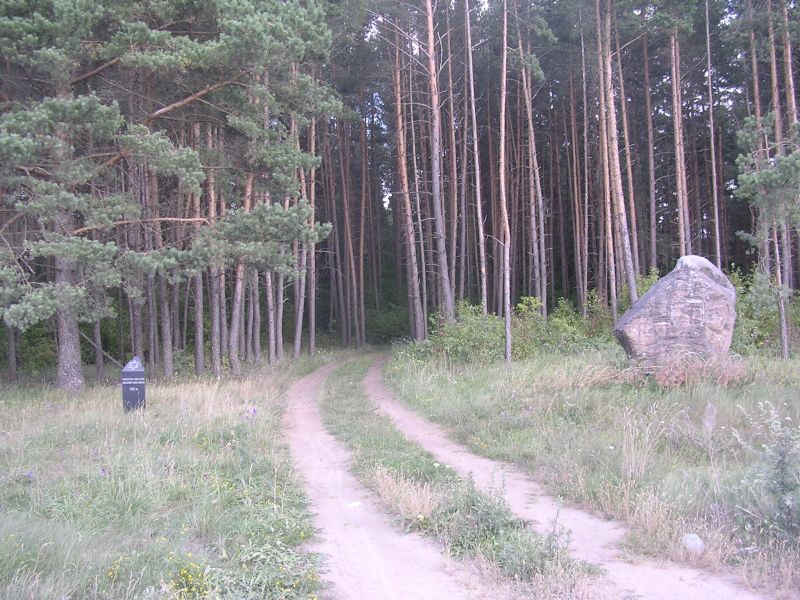
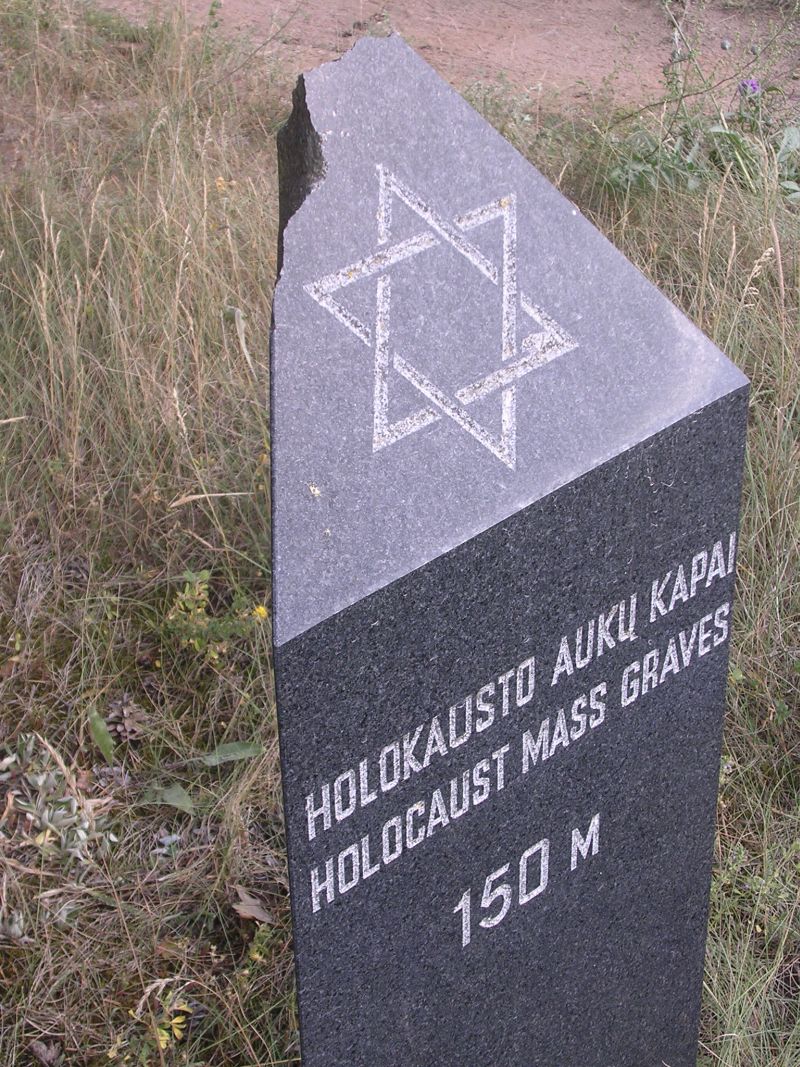 spot with stone spot with stone
|
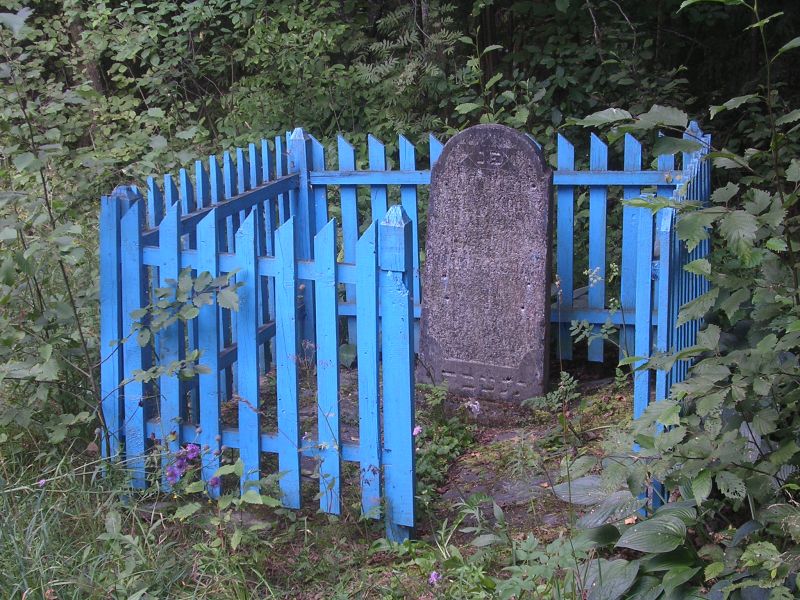 forest entrance forest entrance |
|
Holocaust mass graves near
Kauleliškiai Now (in 2015) , new monuments (sculptor Romas Kvintas) are going to replace the old ones. 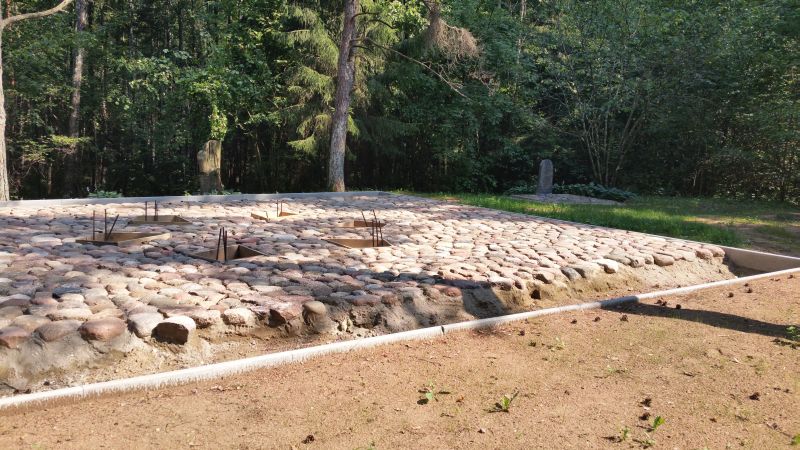 the foundations for the monument the foundations for the monument |
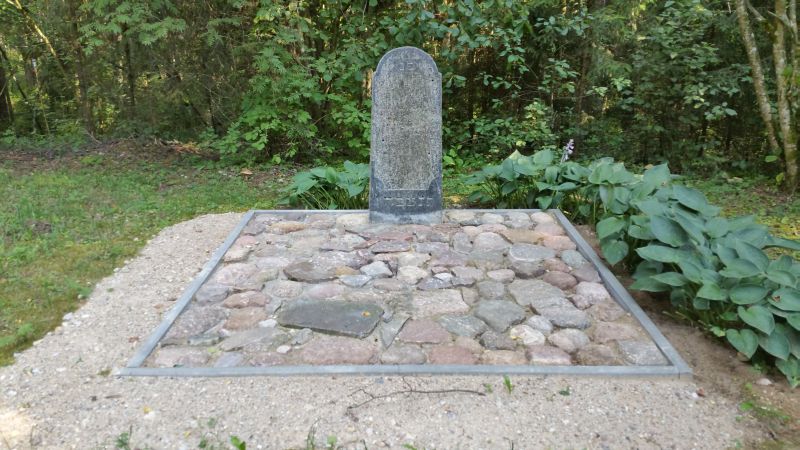
a spot next to the foundations, the blue fence (see above) has been replaced by stones in the ground
Then 35 Jews who at the beginning were made to do farm work were murdered at the “red estate” a few kilometers from Seduva and buried in the fields, which were afterwards ploughed with a tractor. Three families, the only Jewish doctor in the area, Patovsky, and those from the Jewish Fighters’ Front, Cooper and Noll, were kept alive in the town for 54 weeks and then also murdered.
Sulamita Noliene (Shulamith Noll) survived this massacre; unfortunately her husband and her two young sons didn't. Sulamita Noliene was not hit by the gunfire and fell between the bodies of murdered victims. The Lithuanians had decided to take a break to get drunk and did not cover the bodies in the pit at that time. Sulamita Noliene, dressed only in undergarments, climbed out of the pit during the night and made her way to the church where luckily she met the local priest, Nikolas Karosas, and she told him about the murders. He brought her some clothes and organized refuge with some local farmers (the Paluckas family), where she remained for the duration of Nazi occupation. While there she made contact with the Jews of the Siauliai (Shavel)Ghetto. When the ghetto was eliminated Sulamita Noliene helped Gershon Kirpitznik hide with the same farmer. Both survived the war.
Some Jewish persons tried to save their lives by converting to Catholicism. So did doctor Paturskis (2) and Kuperas (5). They didn’t survive; they were shot.
The Jewish shoemaker Gershon Kirpitznik (Kirpitsjnikas) and the young Jewish woman Sulamita Noliene were, actually, also , baptized by the local priest. Earlier, Gershon Kirpitznik (Kirpitsjnikas) of Seduva was forced by the Germans to work for them in a factory in the Siauliai ghetto. He had to make shoes for the soldiers. He managed to escape and with the help of Shulamith Noll, he found a hiding place in Paluckas' house for a while and in the end Gershon Kirpitznik left the Paluckas family. He survived.
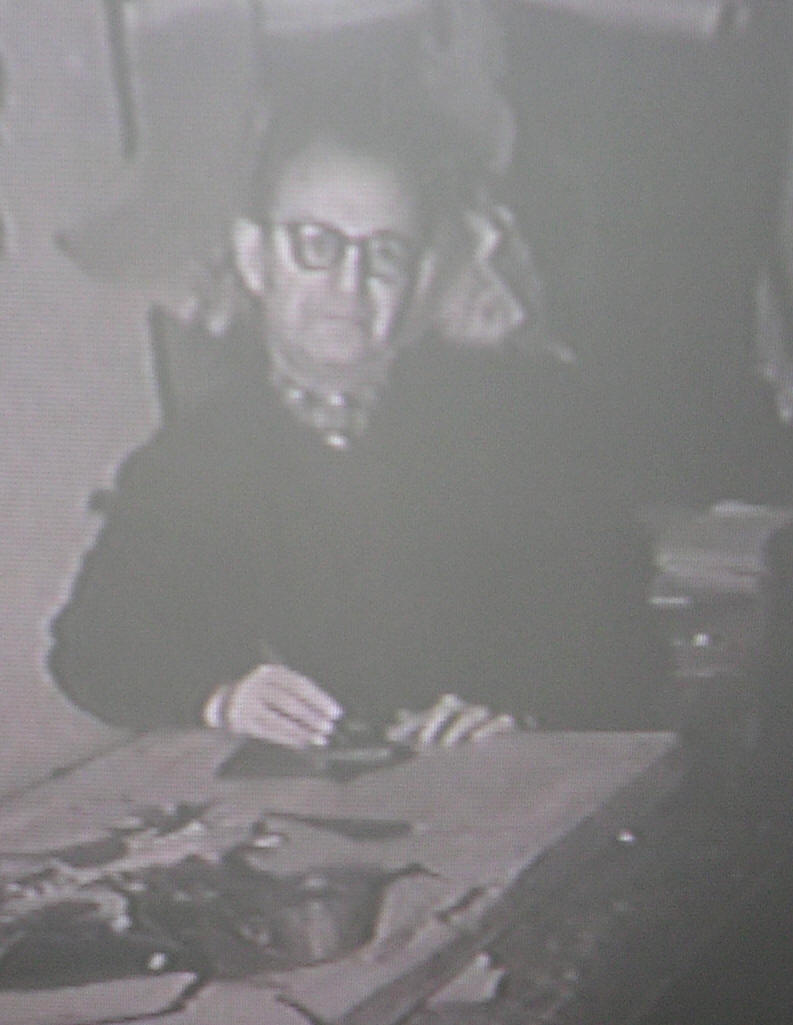 shoemaker
Kirpitsjnikas
shoemaker
Kirpitsjnikas dairy
dairy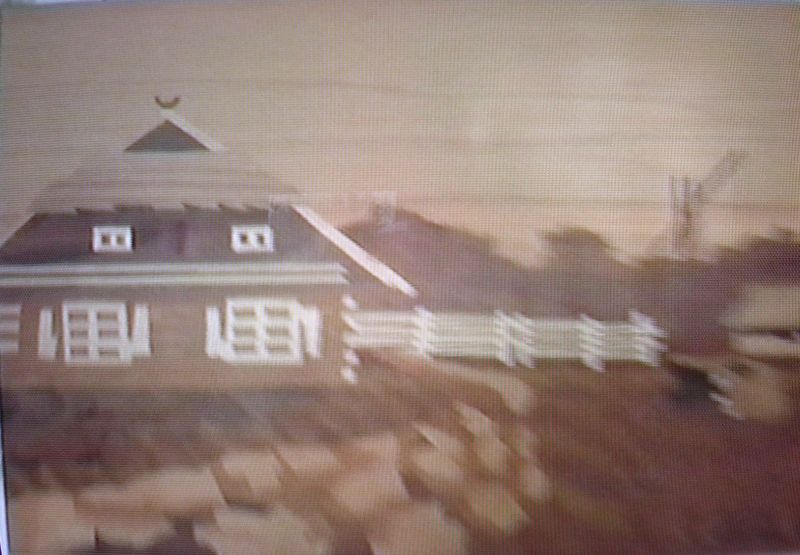 house of
Valerija's
parents
house of
Valerija's
parents
The Paluckas couple had made a special hiding place in the dairy for Sulamita Noliene . During day time Sulamita Noliene cooked dinner for the family, and did some cleaning . During night time she was in her hiding place. Also, during night time she could stay outside and go for a very small walk. Sometimes danger was calling and then she immediately went back into her hiding place. This happened once when she was preparing hot meal and when people entered, they saw cooking pans, but not a trace of Noliene.
Sulamita Noliene was already pregnant when she was giving shelter and she gave birth to a son. Liudvika Paluckas said she was the mother and she took care of him as a real mother. Valerija remembers the presents her mother got from family and neighbours for her young baby and all this was very exciting, because it wasn’t her own baby, but Sulamita’s. The baby was baptized by the priest Antanaitis and the boy got the name of Petras (Pincas) Paluckas. Petras was baptized in May 1943. His Hebrew name is Pinchas.

certificate
The certificate of baptism of Petras Paluckas
 family
family
Sulamita, Stanislav Palusckas, Petras (Pinchas), Liudvika Paluckas
in 1946
 parents
parentsPhoto of the parents of Valerija Orantiene, Mr. and Mrs. Stanislav and Liudvika Paluckas.
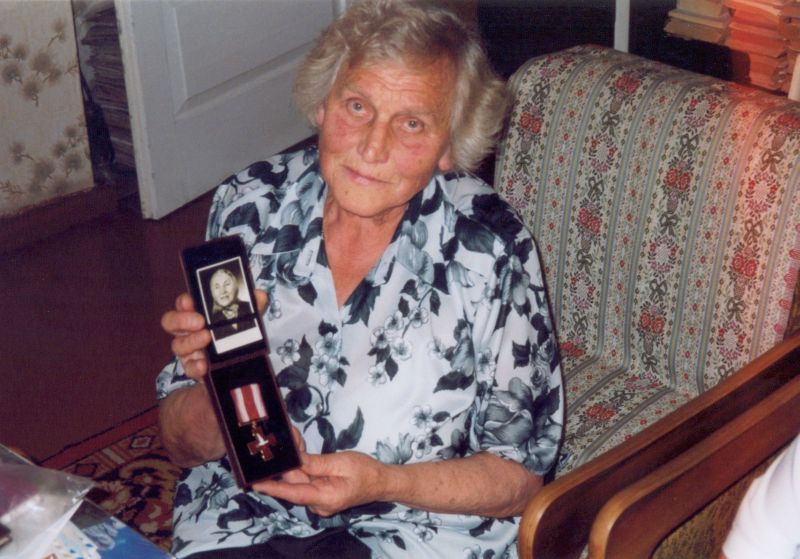 Valerija
ValerijaMrs. Valerija Orantiene is showing us the medal , her mother Liudvika Paluckas received from the Lithuanian Government as an expression of gratitude and reward for saving a Jewish woman and her child from the murdering hands of the German occupier and his collaborator. Her mother Liudvika Paluckas was called: the Righteous among the Nations